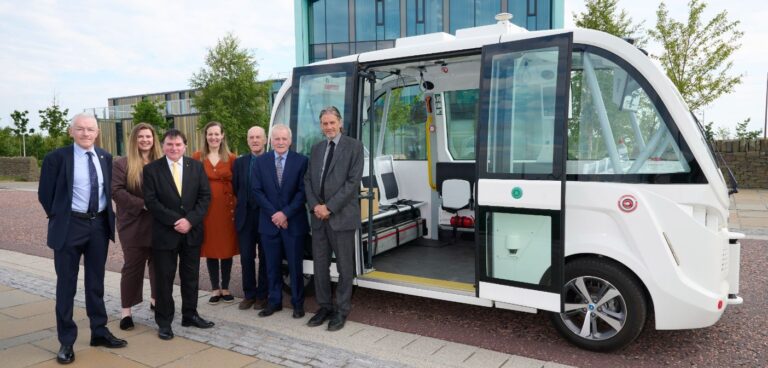Inverness Campus is hosting the first autonomous vehicle passenger service pilot in Scotland.
The vehicle has arrived in the Scottish Highlands and the trials are now underway and will continue until March next year.
HITRANS, the regional transport partnership for the Highlands and Islands, is promoting the scheme to encourage multimodal travel and to move away from private car use.
It won European funding – through the Planning for Autonomous Vehicles (PAV) project, funded by the Interreg North Sea Region Programme – and is working with a number of partners to deliver the project.
These include Stagecoach, which will operate the service, Navya, which manufactured the vehicle, The Highland Council and Inverness Campus.
The autonomous passenger service provides a 3km (1.8-mile) route linking Inverness Campus with Inverness Retail and Business Park, including a railway crossing facilitated by the recently introduced sustainable travel bridge.
The corridor is restricted to public transport, walking, and cycling only, with those walking and cycling segregated from road vehicles across most of the route.
Jayne Golding, projects and policy manager, HITRANS, said: “Safety is paramount to the project and all UK regulation relating to autonomous vehicles will be complied with.
“While the vehicle might be capable of driving itself without being controlled by an individual, an operator will be always present in the vehicle.
“The driving task will be delegated to the vehicle, but the operator will be ready to take control whenever they are required to do so.”
One vehicle is operating on the route offering up to 15 occupants, with 11 seated and four standing.
The shuttle service is expected to be used by students and people working on the Inverness Campus site to access the neighbouring Shopping and Business Park throughout the day.
The vehicle will initially operate on a shuttle basis from 10am until 4pm and no fares will be charged until 01 October 2022.
Monitoring will be conducted throughout the pilot on various technological aspects as well as social impacts.
The intention of the pilot is not only to test the viability of a route operated by an autonomous vehicle, but also to test the technology required to use such vehicles in combination with other transport modes and better understand user perceptions.
Dedicated work streams have therefore been developed to focus on the long-term socio-economic impacts of autonomous vehicles, with research validated using pilot project results.








